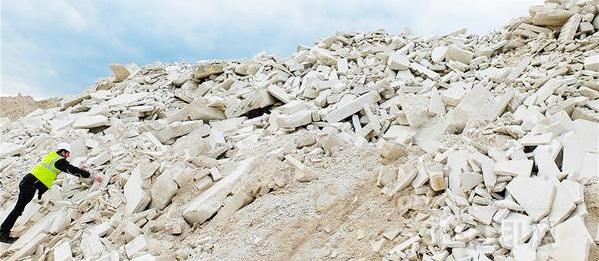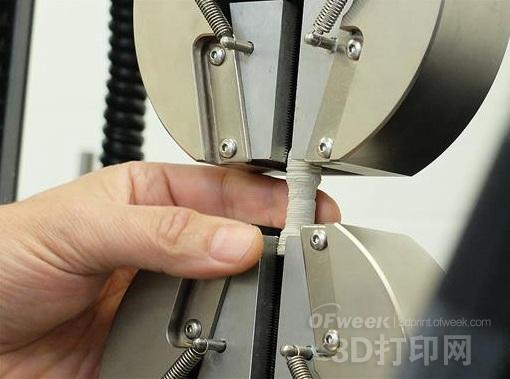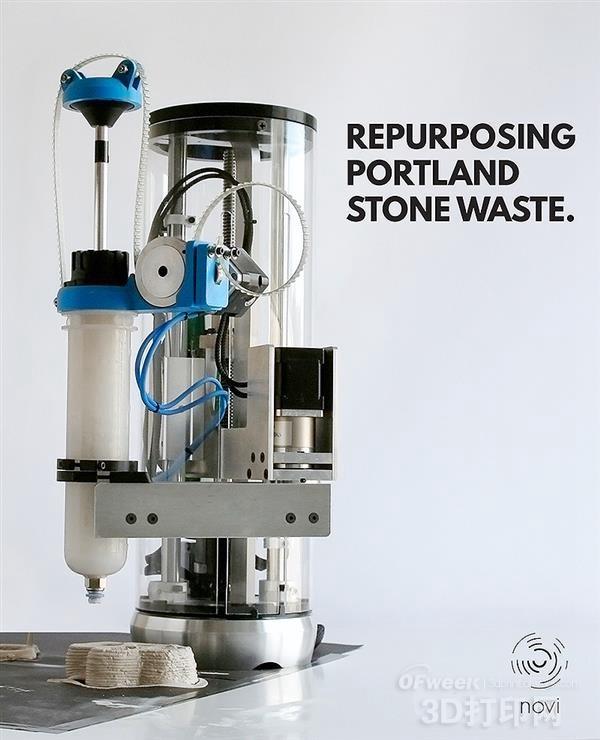
background
It is more important than ever to deal with the world's garbage. For example, in the limestone quarrying industry, valuable waste has been identified to account for approximately 80% to 90%. In order to continue to process this large amount of valuable limestone waste, Jack Biltcliffe worked with ASTUDIO and the Portland Sculpture and Quarry Trust to develop Novi. This is a new 3D printing device that is used for lime slurry extrusion on the ground. This project has now become an important part of the undergraduate degree at Brunel University London.
Mining limestone - an inefficient process
The construction industry is the main market for limestone mining, which currently sets higher quality standards and requirements for limestone. Inefficiency in quarrying and masonry stages leads to waste, in large part because limestone is a natural material that contains many faults. It is not cost-effective to circumvent those defects for quarries, so it is necessary to extract defective stones, which often leads to waste. The entire quarrying process produces waste at an extremely fast rate, requiring a large area to store and dispose of waste. When a large enough amount has been accumulated, these discarded stones can be sent to the pulverizer for conversion into aggregates.

Cooperation with Portland Island
A limestone quarrying industry has been built around Portland Island. Portland stone is a popular limestone, and some famous buildings, such as St. Paul's Cathedral (located in London, UK), use it as a building material. Through contacts with certain institutions such as the Portland Sculpture and Quarrying Trust (PSQT) on Portland Island, the project has been able to collaborate with the quarry and participate in the island's exciting regeneration projects. The purpose of this project is to help regenerate resources on Portland Island by reusing waste from the quarrying process and printing it 3D into sculptures.
Lime paste extrusion process development
Through a series of iterative experiments, a lime paste extrusion process was developed, which is part of a key undergraduate program at Brunel University in London. Initially, developers observed that fine-grained limestone can be mixed with the coolant during the stone cutting process to form a limestone slurry. The slurry is then dried and then fully hardened together. This method of drying the slurry can be used for paste extrusion and even for final 3D printing.
Material development
The trial of pure limestone 3D printing faces many challenges. For example, a printed object will once again collapse into mud once it comes into contact with water. Structural tests have also shown that the tension of pure limestone components is extremely weak. The development of this material by adding other compounds has continued and there are positive results.

3D printer development
The first physical experiment of 3D printing limestone objects involved a Mendel90 desktop 3D printer that used a 10 ml syringe as a way to control paste extrusion. After optimizing the injector device and trying to successfully print with limestone, the developers quickly discovered that it was a problem to securely obtain the printed object due to the long drying time. Small size test subjects must be dried for more than 12 hours before being disposed of or removed from the construction panel. This means that 3D printers cannot be used for long periods of time because the prints need to be dried. In order to reduce the waiting time on the printer, it is necessary to further study the three-axis motion mechanism of the machine. To this end, researchers have chosen a mechanical control method similar to SCARA robots. SCARA robots are often used as handling robots on the assembly line, and their arms can be cooperatively positioned to the XY position. Based on this, developers have developed a custom CARA robotic arm called Novi. Unlike a traditional 3D printer, it is not limited to a fixed build board, but any plane can be a build board, after which the printer can be moved to a new build board.

Large extruder
A larger version of the paste extruder was developed next to Novi to allow for larger print sizes. The new extrusion system was built on a previous system and a 200 ml volume syringe was mounted at the end of the arm. The benefits of using a syringe are easy to use, inexpensive, and easy to control.

application
This project hopes to help Portland's resource reuse project by using scrap to create 3D printed sculptures. Researchers are currently conducting further research to achieve more ambitious designs and explore other practical applications that may affect the construction industry.
Yadea furniture factory modern design wood Dining Table.We use well selected ash and beench wood and MDF in wood veneer finish to build the base and table top.Environmental-friendly solid wood no harm to health.The scandinavia design dining table gaining widely popularity everywhere in the world.Applications for dining room,hotel,etc.Modernize your dining room with the iconic dining table
Wooden Round Dining Table,Restaurant Wood Dining Table,High End Wood Dining Table,Competitive Price Wood Dining Table
DELO SOFA , https://www.mcmdeco.com